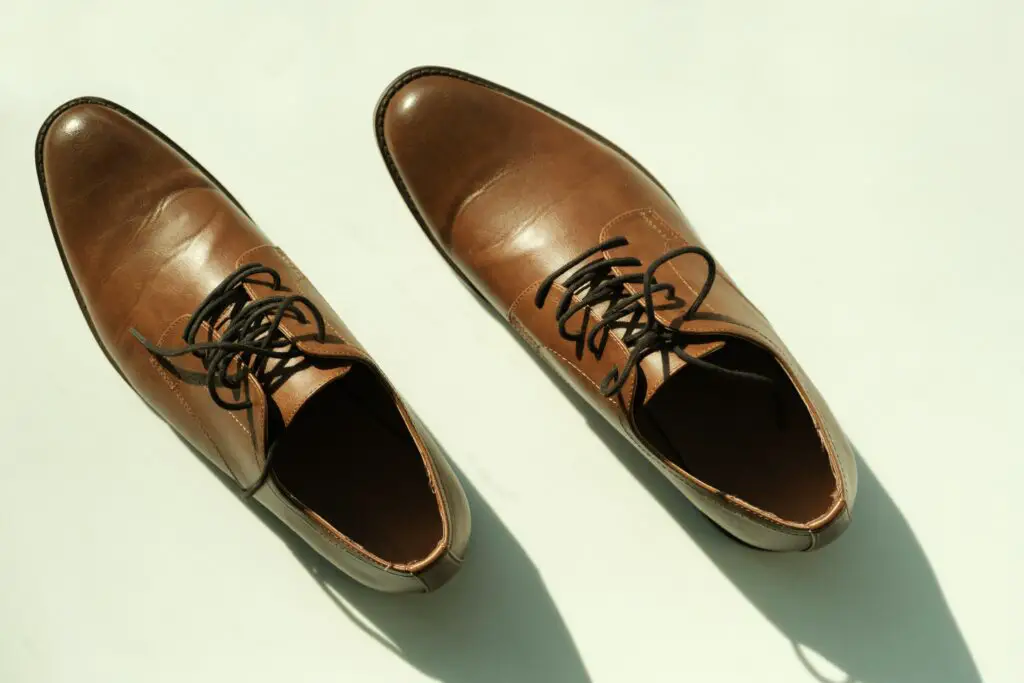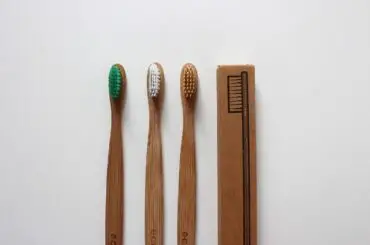Faux leather boots have become a staple in many wardrobes, offering style and durability at an affordable price. However, over time, one common issue plagues these beloved footwear pieces is the peeling of the faux leather. You may have encountered it before – those unsightly cracks and flakes that not only diminish the boots’ aesthetics but also threaten their overall longevity.
Question: How do you fix faux leather peeling boots?
Contents
Materials Needed
To successfully repair peeling faux leather on your boots, you’ll need a set of essential materials and tools. 
1. Faux Leather Glue:
– Faux leather glue is the hero of this repair mission. It’s specially designed to bond faux leather and synthetic materials, ensuring a secure and long-lasting fix. Be sure to choose a high-quality adhesive for the best results.
2. Scissors:
– A pair of sharp scissors is indispensable for this task. You’ll use them to trim away any loose or peeling edges of the faux leather, creating a smoother surface for the repair.
3. Clean Cloth or Sponge:
– Before gluing, your boots must be clean and free of dirt, dust, or debris. A clean cloth or sponge dampened with water will help you achieve this essential step. It’s crucial to start with a clean canvas for a successful repair.
4. Sandpaper (Optional):
– While optional, fine-grit sandpaper can be a valuable tool if the peeling area is uneven or rough. It lets you gently smooth out the surface, ensuring a more seamless and aesthetically pleasing repair.
Preparing Your Boots
Before diving into the repair process, preparing your boots properly is crucial. This step sets the foundation for a successful faux leather fix.
Importance of Starting with Clean and Dry Boots:
Begin with a clean slate – or, in this case, clean boots. Clean and dry boots provide several advantages:
– Better Adhesion: A clean surface ensures the faux leather glue adheres effectively to the peeling area and the underlying material.
– Longer-Lasting Repair: The repaired area will likely stay intact over time when you start with clean and dry boots. It minimizes the risk of the peeling issue resurfacing.
– Improved Aesthetics: Clean boots offer a more pleasing canvas for repair, enhancing your footwear’s overall appearance once the fix is complete.
How to Clean the Boots to Remove Dirt and Debris:
1. Gather Your Materials: As mentioned in the previous section, you’ll need a clean cloth or sponge and water for this step.
2. Dampen the Cloth or Sponge: Moisten the clean cloth or sponge with water. Ensure it’s not soaking wet, as excess moisture can harm faux leather.
3. Wipe the Boots: Gently wipe the entire surface of your boots, paying close attention to the areas with peeling faux leather. Use light, circular motions to lift and remove dirt, dust, or debris.
4. Repeat as Needed: If your boots are particularly dirty, you may need to repeat this process until they are thoroughly clean. Remember to allow the boots to dry completely before moving on to the next steps of the repair.
Trimming Loose Edges
When dealing with peeling faux leather on your boots, one of the first tasks is to address those loose or flapping edges. Here, we’ll discuss why it’s essential to trim them and provide a guide on how to do it effectively:
The Need for Trimming Loose or Peeling Edges:
The peeling edges of faux leather not only detract from the boots’ aesthetics but can also worsen the problem over time. Here’s why trimming these edges is crucial:
– Prevents Further Peeling: Loose edges are more likely to catch onto objects and gradually worsen the peeling problem. Trimming them removes this risk.
– Creates a Smooth Surface: Trimming ensures that the repaired area will be as smooth as possible, minimizing any noticeable imperfections in the final result.
– Enhances Adhesion: Trimming away the loose portions exposes a cleaner surface for the faux leather glue to bond effectively.
How to Use Scissors to Trim Effectively:
Trimming the loose edges of peeling faux leather may seem straightforward, but it’s important to do it correctly to achieve the best results. Here’s a step-by-step guide on how to use scissors effectively:
1. Select the Right Scissors: Choose a pair of sharp scissors suitable for cutting fabric or leather. Ensure they are clean and free of any adhesives or residue.
2. Inspect the Peeling Area: Examine the peeling area carefully to identify loose or flapping edges. Focus on these sections.
3. Hold the Boot Securely: Hold the boot securely with one hand to avoid accidental damage or uneven cuts. Make sure your fingers are clear of the cutting path.
4. Trim Carefully: Carefully trim away the loose or peeling edges with the scissors. Start from the outermost edge and work your way inward. Use smooth, even cuts to create a clean and tidy edge.
5. Inspect the Trimmed Area: After trimming, inspect the area to ensure that you’ve removed all loose edges. It should now have a neater and more defined edge.
Maintenance Tips
Once you’ve successfully repaired your faux leather peeling boots, it’s essential to take steps to maintain them properly. These maintenance tips will help you prevent further peeling and ensure your boots stay in great condition:
Regular Cleaning and Conditioning:
1. Clean as Needed: Make it a habit to clean your boots regularly. Consider a mild soap or leather cleaner suitable for faux leather for more thorough cleaning.
2. Condition the Faux Leather: To keep the faux leather supple and less prone to peeling, apply a faux leather conditioner or a conditioner suitable for synthetic materials. Follow the product’s instructions for application.
3. Polish for Shine (Optional): Some faux leather boots can benefit from a non-greasy faux leather polish or shine product. Use it sparingly for added luster and protection.
Avoiding Excessive Moisture, Heat, or Sunlight Exposure:
1. Moisture and Wet Conditions: Faux leather is less water-resistant than genuine leather. If they do get wet, allow them to air dry naturally. Do not use heat sources like hairdryers, as they can damage the material.
2. Heat and Direct Sunlight: Faux leather can become brittle when exposed to excessive heat or direct sunlight. Avoid leaving them in hot cars or near heaters.
3. Proper Storage: When not wearing your boots, store them upright in a well-ventilated area. Stuffing them with boot shapers or newspaper can help maintain their shape.
4. Rotation of Use: If you have multiple pairs of boots, consider rotating them regularly. This allows each pair to air out and prevents excessive wear on any single pair.
How do you fix faux leather peeling boots?
Learning how to fix peeling faux leather on your boots offers numerous benefits, from extending their lifespan to saving you money. It’s a skill that allows you to revive your favorite footwear and continue making style statements. Don’t let peeling faux leather hold you back; use this guide to restore and prolong the life of your beloved boots.





